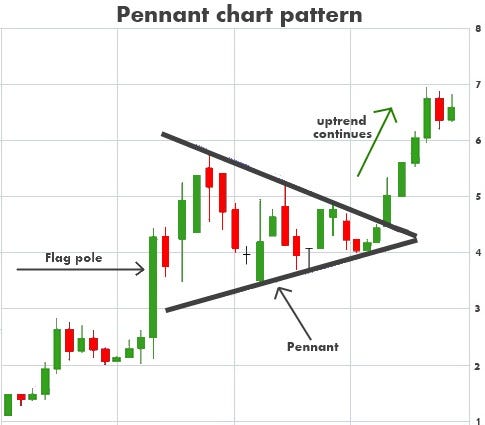Strategy customization is a crucial characteristic of AI stock predicting/analyzing trading platforms that allow users to adapt the platform to meet their particular trading needs, risk tolerance, and market conditions. A platform that has a range of options for customization will improve your trading. Here are 10 guidelines on how to assess the customizability of the platforms.
1. Evaluate Pre-Built Strategy Templates
A variety of templates: Find out whether the platform offers an array of pre-built trading strategies (e.g. day trading, swing investing, long-term investment).
You are able to easily modify the templates to adapt them to your specific needs.
Performance history: Determine whether the platform offers historical performance data for pre-built strategies.
2. Review the Custom Strategy Development
Drag-and-drop platforms: Select platforms with drag-and-drop interfaces which let you easily develop personalized strategies.
Check for coding options. For more advanced users, it may be necessary to determine if the platform allows custom programming.
Flexibility. Make sure you can define the key elements like risk management parameters, entry/exit regulations, and any other elements of your plan.
3. Check for Backtesting Capabilities
Historical data: Verify that the platform has enough historical data to backtest strategies.
Customizable Parameters: You must be able to modify parameters, including indicators and timeframes, when backtesting.
Performance metrics: Check if the platform offers specific performance metrics for backtested strategies (e.g. win rate Sharpe ratio drawdown, etc.).
4. Evaluate Real-Time Strategy Testing
Paper trading: Check that the platform provides paper trading and simulation modes for testing strategies in real-time without placing your money at risk.
Live testing is a fantastic method of determining whether your strategy is able to be tested in the real market with small amounts.
Real-time adjustments - Check whether you're able to alter your strategies at a moment's notice in response to market conditions.
5. Examine the degree of integration using technological indicators
Check if there is an indicator library.
Custom indicators: Make sure that you have the ability to import or develop custom indicators for your plans.
Combination of indicators Look to see if the platform allows combining multiple indicators to support complicated strategies.
6. Check for Risk Management Tools
Stop-loss/take-profit: Ensure the platform allows you to set stop-loss and take-profit levels within your strategies.
Size of the position: Determine whether you can set up rules for the size of your position (e.g. fixed amount or a percentage of the portfolio) to control the risk.
Risk-reward ratio: Examine the platform's capabilities to set risk/reward ratios on individual trades or trading strategies.
7. Evaluate Multi-Asset Strategy Support
Asset classes: Ensure that your platform is able to support various asset classes like ETFs, stocks and options.
Strategies for cross-assets: Determine if you're able to design strategies that incorporate various asset classes.
Market coverage - Make sure that the platform is covered by markets you are interested (e.g. US and international markets, copyright, etc.).
8. Assess Automation and Execution
Automated trading. Make sure the platform supports automated execution based on predefined strategies.
Types of orders: Determine if the platform supports various kinds of orders (e.g., limit, market and stop) to execute a strategy.
Latency: Ensure that the platform you are using has a low latency when trading, particularly if you employ high-frequency strategies.
9. Look for tools to optimize your strategy.
Parameter optimization. Be sure that your platform lets you optimize the parameters of your strategy (e.g. Grid search, Genetic algorithms).
Machine learning integration: Find out whether the platform is integrated with machine learning in order to refine and enhance strategies.
Scenario analyses: Verify whether the platform permits you to test various strategies under different market scenarios (e.g. bear or bull volatile).
10. Review Community Support and Feedback from Users
User feedback: Utilize user reviews to determine the efficiency of the platform for customizing strategies.
Community forums - Search to see if the platform has a community that is active and where users can discuss their unique strategies.
Support resources: Ensure that the platform has tutorials, webinars or documentation to help users create and optimize strategies.
Bonus Tips
Trial period: Use the free trial to try out the ability to customize your strategy.
Scalability: The platform must be able to handle more complex trading strategies as you evolve.
Customer Support: Ensure that the platform provides assistance for any concerns related to strategy or questions.
These suggestions will allow you to evaluate the customization options of AI trading platforms which predict/analyze stocks. This way you can pick one that best suits your goals in trading, which allows you to refine and implement strategies. Platforms with strong customization capabilities will allow you to adapt to changing market conditions, and improve the performance of your trading. View the recommended trade ai blog for website advice including ai investing, best ai trading platform, best ai trading app, investment ai, ai for investing, investing in ai stocks, chart ai for trading, free ai tool for stock market india, stock analysis app, stock analysis app and more.

Top 10 Tips To Assess The Maintenance And Updates Of Ai Stock Trading Platforms
To ensure that AI-powered stock trading platforms and prediction platforms remain secure and efficient, they must be maintained and regularly updated. Here are the top 10 tips to evaluate their update and maintenance practices:
1. Updates Frequency
Tip: Determine how often your platform updates (e.g. quarterly, monthly, weekly).
Why are regular updates a sign of active development and a willingness to respond to changes in the market.
2. Transparency in Release Notes
Tips: Read the release notes on your platform to learn about any updates or changes.
Why? Transparent release notes demonstrate the platform's dedication to continual improvements.
3. AI Model Retraining Schedule
Tips - Find out how often AI models are retrained based on new data.
Why: As markets change models must change so that they remain relevant and relevant.
4. Bug fixes and Issue Resolution
Tip Assess how fast a platform can address the bugs that users report or addresses technical issues.
Why? Prompt corrections to bugs will ensure the platform remains operational and reliable.
5. Updates on Security
TIP: Check that the website is constantly changing its security procedures to safeguard the data of users and trading activity.
Why is cyber security essential for financial platforms in order to avoid attacks and fraud.
6. Integration of New Features
Check to see if new features are introduced (e.g. the latest data sources or advanced analytics) in response to feedback from users and market trends.
Why? Feature updates are an indication of innovation and responsiveness towards user needs.
7. Backward Compatibility
Make sure that any the updates won't affect existing functionality or necessitate significant reconfiguration.
Why: Backwards compatibility provides a smooth experience for users during transitions.
8. Communication between Users and Maintenance Workers
Learn how your platform informs users about scheduled maintenance and downtime.
Why is that clear communication builds confidence and prevents interruptions.
9. Performance Monitoring, Optimization, and Analysis
TIP: Ensure the platform monitors and optimizes the performance of your system (e.g. accuracy, latency).
The reason: Continuous optimization of the platform ensures it remains efficient and scaleable.
10. The compliance with regulatory Changes
Verify if the platform been updated with its policies and features in order to comply with any recent data privacy laws or financial regulations.
Why: Regulatory compliance is vital to minimize legal liabilities and to maintain confidence in the user.
Bonus Tip! User Feedback Incorporated
Check if updates and maintenance are based on feedback from users. This shows a user-centric approach and a commitment to improving.
When you look at these aspects to ensure that the AI-based stock prediction and trading platforms that you pick are well-maintained, updated and capable of adapting to the changing dynamics of markets. Take a look at the best get redirected here about ai for stock trading for more examples including invest in ai stocks, trading ai bot, best ai trading app, ai copyright signals, ai for investing, best ai stocks, incite ai, ai bot for copyright trading, ai investment stock, stock market ai and more.
